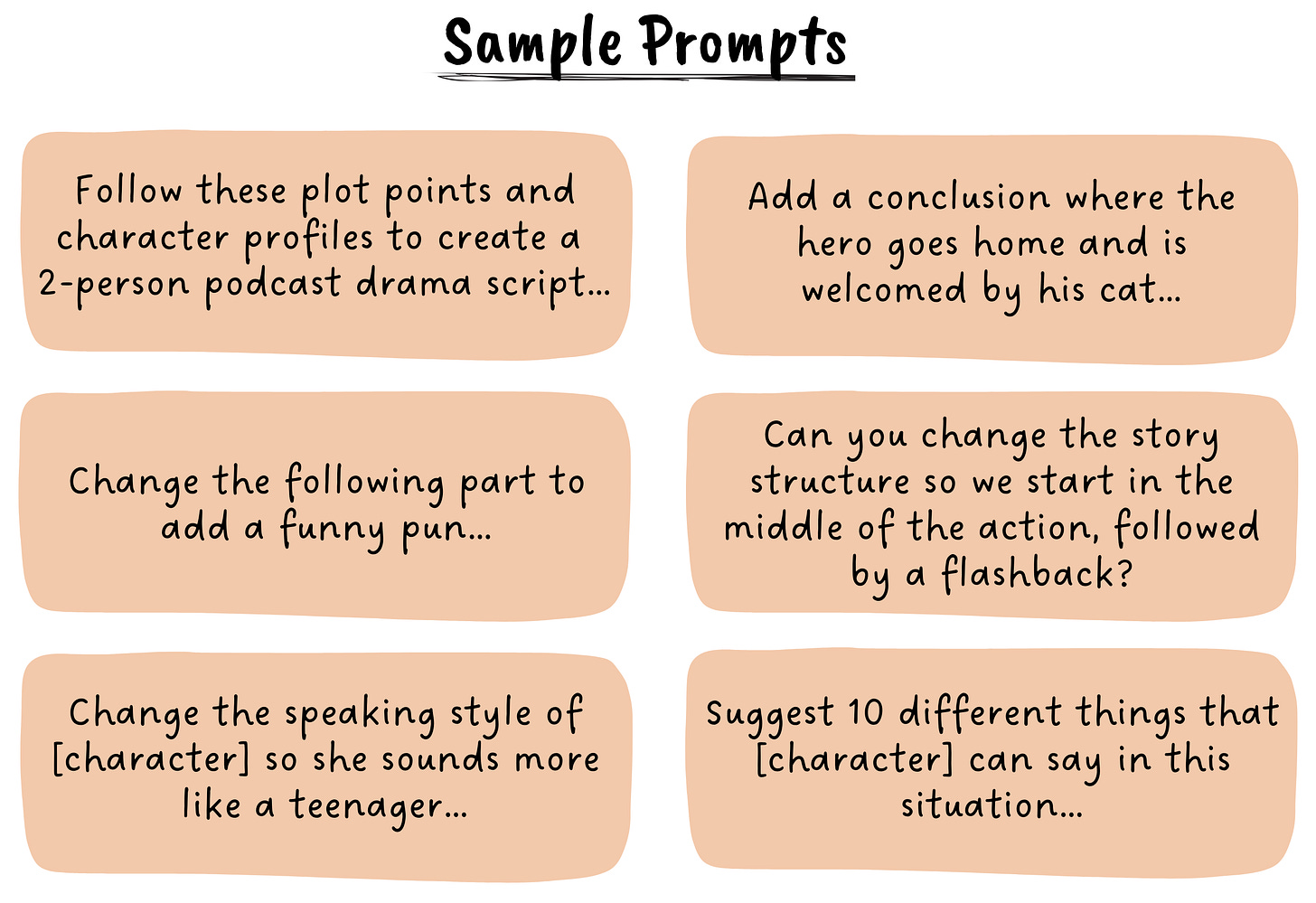AI Loves Creative Writing
Lessons Learned:
Creative writing lessons turn AI hallucinations into an advantage
Design tasks that encourage editing and iteration
Image and music AIs are highly effective at engaging students
Effective prompting makes personalised learning a doodle
The fact that AIs can hallucinate and generate false content has been drummed into anyone who’s been paying attention since ChatGPT launched in 2023. It can be a serious issue in many use cases, but in creative writing lessons, a bit of randomness just makes for a more serendipitous story.
While AI labs are still trying to fix hallucinations by teaching models to reason (like OpenAI’s o1 family) and by grounding them in data (Anthropic’s Model Context Protocol comes to mind), here’s how a pilot lesson with Primary 5 to 6 students at the Hong Kong Academy for Gifted Education used AI to support ESL students:
Lesson Plan
Planning on Pen and Paper
In this 12-hour course, students wrote a short story, converted it into a podcast drama script, recorded themselves performing the story, and generated images and audio accompaniment.
To mitigate students outsourcing their thinking to AI, they began by creating character profiles and outlining the plot on pen and paper.
Edit and Expand with AI
Students typed their handwritten notes to form a prompt for the AI (we used GPT-4o). It was a deliberate choice to keep planning on pen and paper, because the data entry gives students an opportunity to edit and iterate their work as they type.
We also covered basic prompt engineering and AI literacy, emphasising cautionary tales like the New York lawyers whose AI-generated work had inaccuracies.
Students were taught to discuss and edit the story with the AI (e.g. “How can I make this part funnier?”) and given time to finalise a ~3-minute script fit for as many members as they have in their group (as a former language arts teacher, this is such a godsend).
Generate Images and Soundtrack
Each group reads their script aloud and each member gets to choose their favourite moment in the story. That is the moment they’ll use AI to generate, and students have to write image-generation prompts to get the look and style they want (Canva’s free K–12 plan works well, while paid options like Midjourney would give fancier results).
Similarly, students used music generators like Suno and Udio to generate a theme song for their story—asking GPT-4o to analyse the script to form a prompt for the songwriting AI. Generating images and music was highly entertaining to the students, and also helped them practice vocabulary related to imagery.
Record and Present
While students can easily generate AI voices performing their script, that doesn’t help them practise speaking English. Therefore, students used an AI voice changer (we used Elevenlabs) to transform their own performance into different voices while preserving their intonation and cadence.Example of student’s work:
In the end, all the generated media were combined into a slideshow. Everyone listened to everyone else’s stories, everyone clapped, and the lesson was done!
In the next edition…
An Intro to Psych course at a community college uploaded their textbook and outlines to an AI chatbot, so students could ask questions 24/7, in any language they want, following the same terminologies and framework they learned in lectures.
Send us your AI in Action questions, use cases, and ideas at info@goodfuture.foundation!












